An Easy Homemade Pasta Recipe Straight from Italy
I’ve had a love affair with all things Italian for as long as I can remember. This easy homemade pasta recipe is especially dear. It brings back fond memories of our honeymoon in Italy over 10 years ago.
I’ve adapted this recipe based on a cooking class we took in a private home outside of Florence. (Yes, the home was nestled among vineyards, just like you’d imagine from a movie scene!) I hope making this pasta from scratch will bring you as much satisfaction as it did for us.
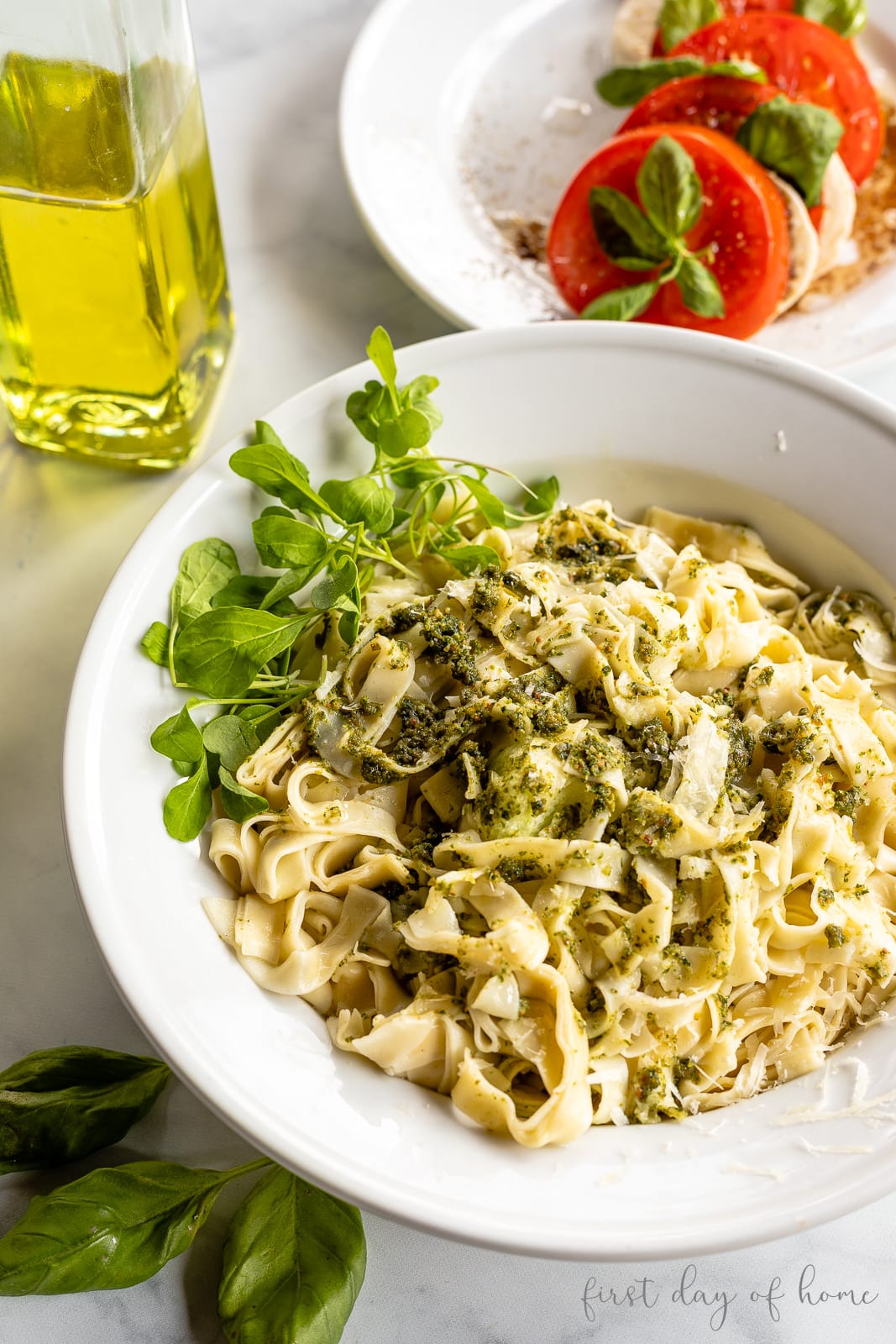
This post contains affiliate links, and I will be compensated if you make a purchase after clicking on my links. For more information, please see my disclosures.
Making Pasta from Scratch
When I find myself “stuck at home,” I tend to do a lot of baking, cooking, and gardening. Luckily, those hobbies go hand in hand!
I realized I hadn’t pulled out my pasta machine in years, but I remembered one thing very clearly:
Pasta made from scratch has a unique ability to absorb the flavors of any sauce. Nothing compares!
Surprisingly, pasta dough isn’t difficult to make and requires only a few ingredients: flour, eggs, and salt. You don’t even really need a pasta machine as long as you have a rolling pin.
(I will say using the machine is kind of fun to use, though.)
You’ll find many variations in the flour used in pasta recipes. That might cause a lot of confusion as you get started. For the best results, you can use either Semolina flour, 00 flour, or a combination of the two. (More on that below.)
Originally, I shared this recipe on my Instagram account, along with a fresh, farm-to-table basil pesto sauce. Stay tuned for the pesto recipe coming soon as well. (Talk about delish!)
Easy Homemade Pasta Recipe – Tips & Tricks
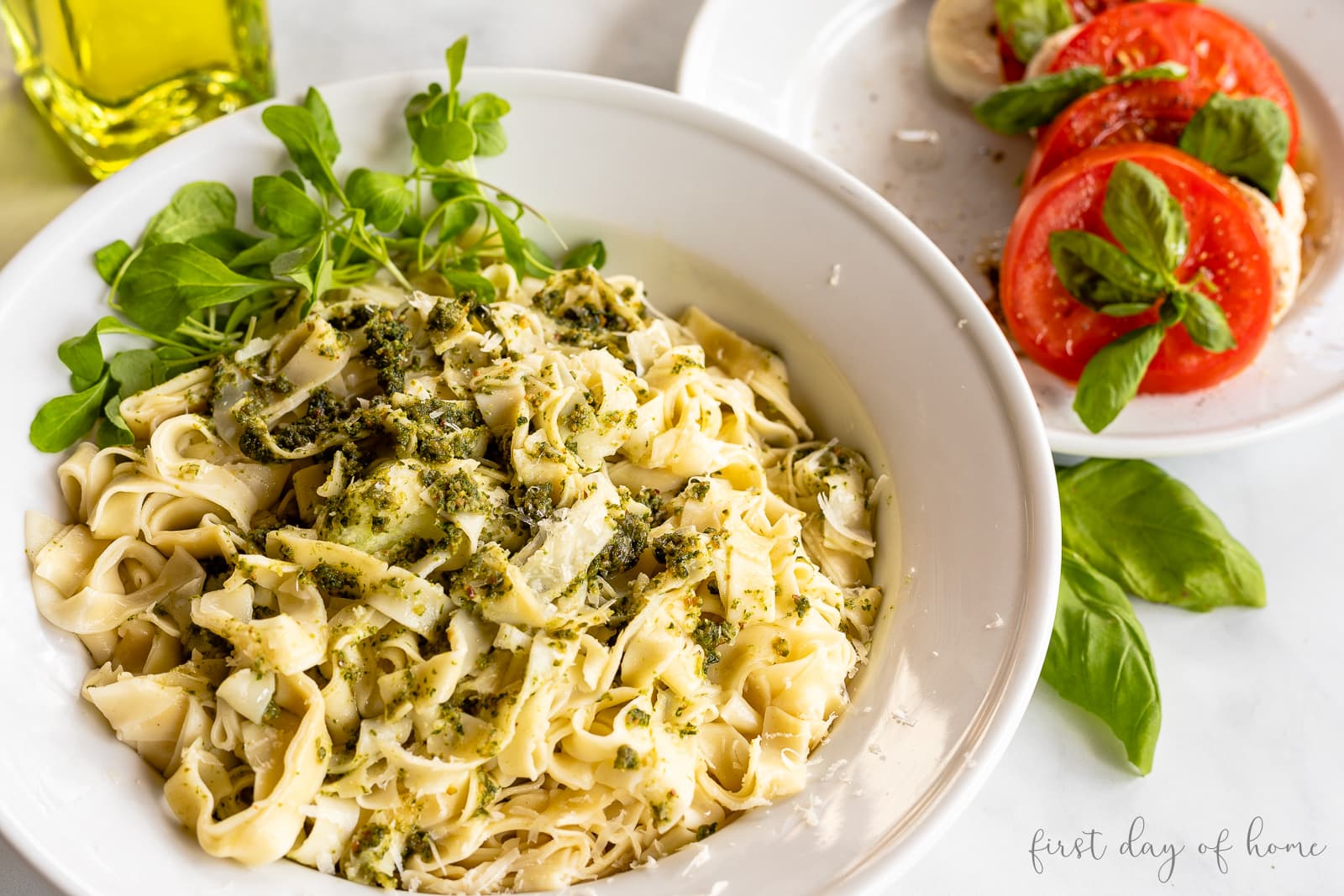
Types of Flour
I really like using 00 flour (doppio zero), which is finely ground flour, for the most delicate texture. This is perfect for spaghetti, linguine, or lasagna noodles.
Semolina, often called “pasta wheat,” has extremely high gluten content, which makes it perfect for holding more complex shapes together. It can offer a nice sturdy shape for dishes that require a thicker noodle (e.g., penne, macaroni, rigatoni). Plus, it has the lovely yellow color that most people associate with pasta.
Substituting half Semolina flour in the recipe below might offer the perfect balance for those who prefer pasta al dente.
All-purpose flour is totally fine if that’s all you have available. You may just find the pasta has a heavier texture.
How to Prepare the Dough by Hand – Option 1
In my opinion, the trickiest step of dough preparation is mixing in the eggs. When you have your mound of flour prepared, make sure your “bowl” in the center is large enough to fit your eggs. (This recipe calls for 2 eggs, lightly beaten.) Using a bowl to contain your flour sometimes helps with this process.
Truth be told, I once had an overflow of eggs that looked like a volcanic eruption and was hard to contain. Make sure the “walls” of your well are high enough so this doesn’t happen to you!
Gradually mix the flour into the eggs by pulling it in from the edges of the well. I like using a fork for this process until the dough is workable with my hands.
Finally, knead the dough about 10-12 minutes until the mixture holds together well. If the dough is too dry, you can add a few tablespoons of water or olive oil. Overly sticky or moist dough may require adding more flour.
Cover the pasta dough with plastic wrap, and let the dough rest about 30 minutes before rolling it out. Then, work with one quarter of the dough at a time to create noodles.
How to Prepare the Dough with a Mixer – Option 2
If using a mixer, you can attach a dough hook and follow the same order of ingredients and steps used in the manual method.
Do I need a pasta maker?
The short answer is no. You can roll out the dough on a cutting board or kitchen counter, just as you would sugar cookies.
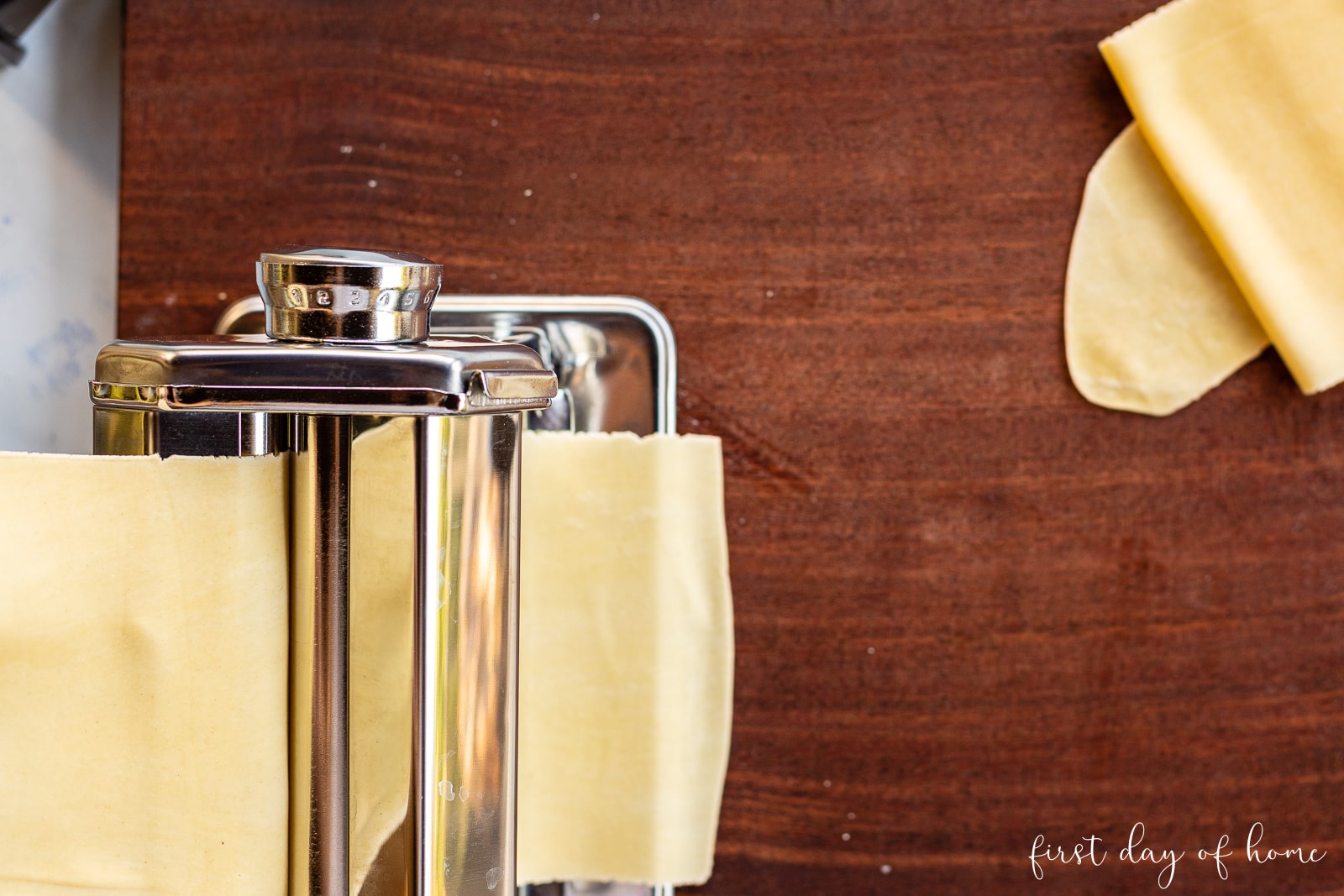
However, the benefit of a pasta machine is getting the perfect (and consistent) thickness. Because these machines have a knob to gradually step down to the desired thickness, you know your noodles will look professional.
When rolling the dough through a pasta machine, press the dough two times for each level of thickness. For example, I start at the widest thickness (7 on my hand-crank machine) and work down to a 1 or 2.
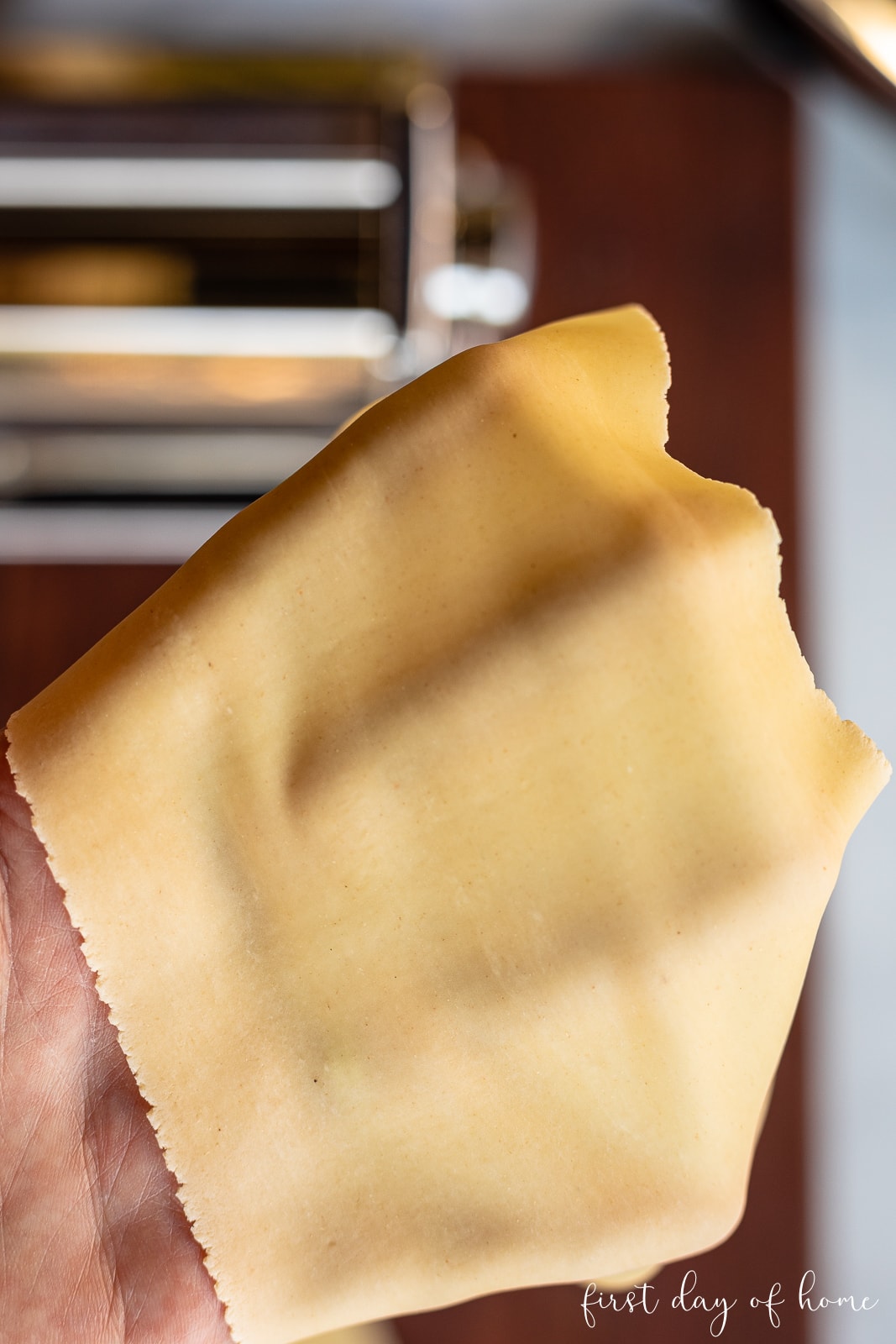
You will need to fold the dough in thirds to run it through the machine multiple times. This process will form one long rectangle. You should almost see your fingers through the dough once you’re done (see above).
I suggest cutting the rectangle to your desired noodle length and letting it dry slightly (15 minutes). Finally, cut it with the noodle attachment on your pasta maker.
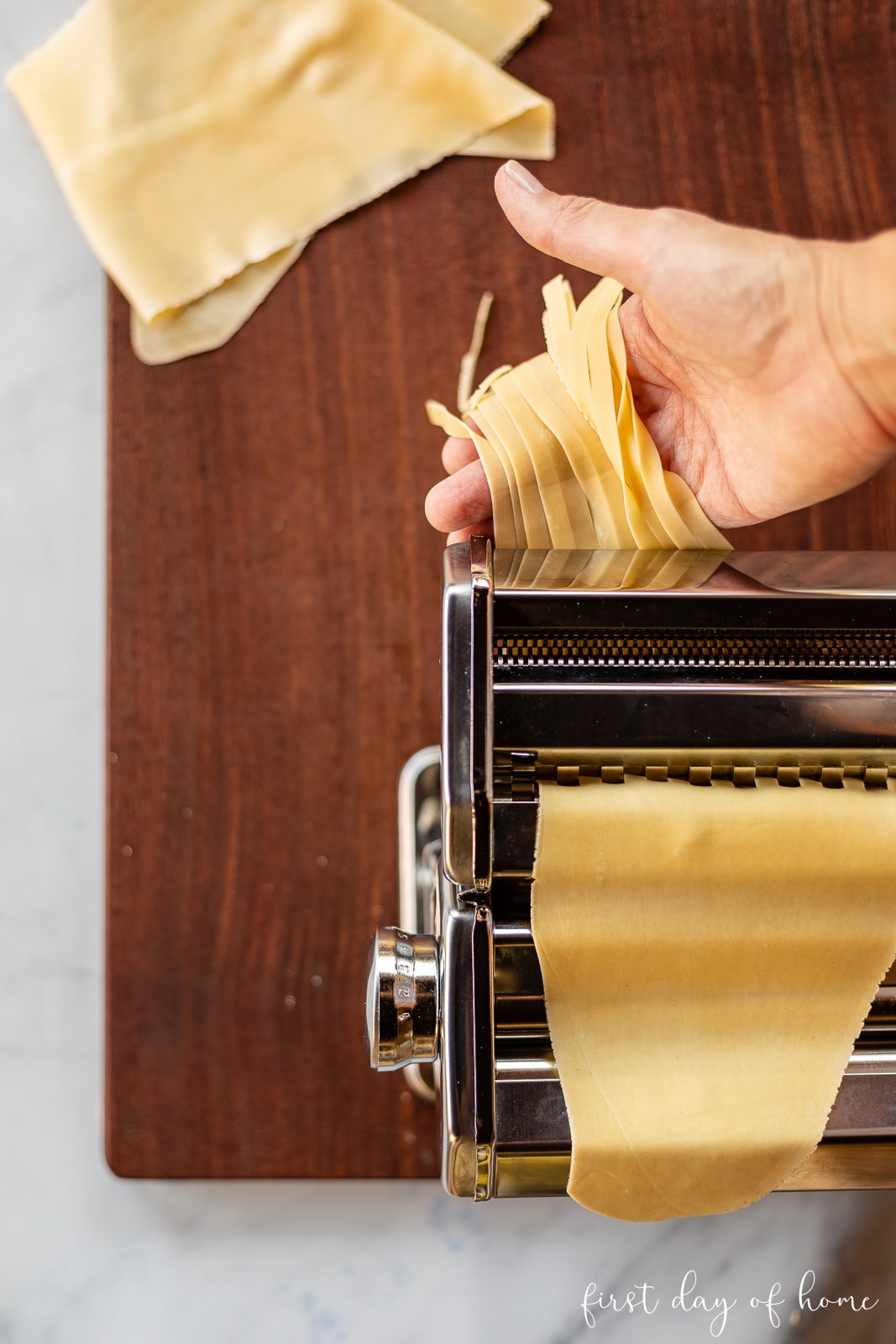
To make pasta noodles without a machine, simply roll up the flattened dough (like a pinwheel or fruit rollup). Then, cut through all layers of the dough to create spaghetti or linguine strips.
Unroll the noodles, and follow the drying steps below.
Drying Noodles Properly
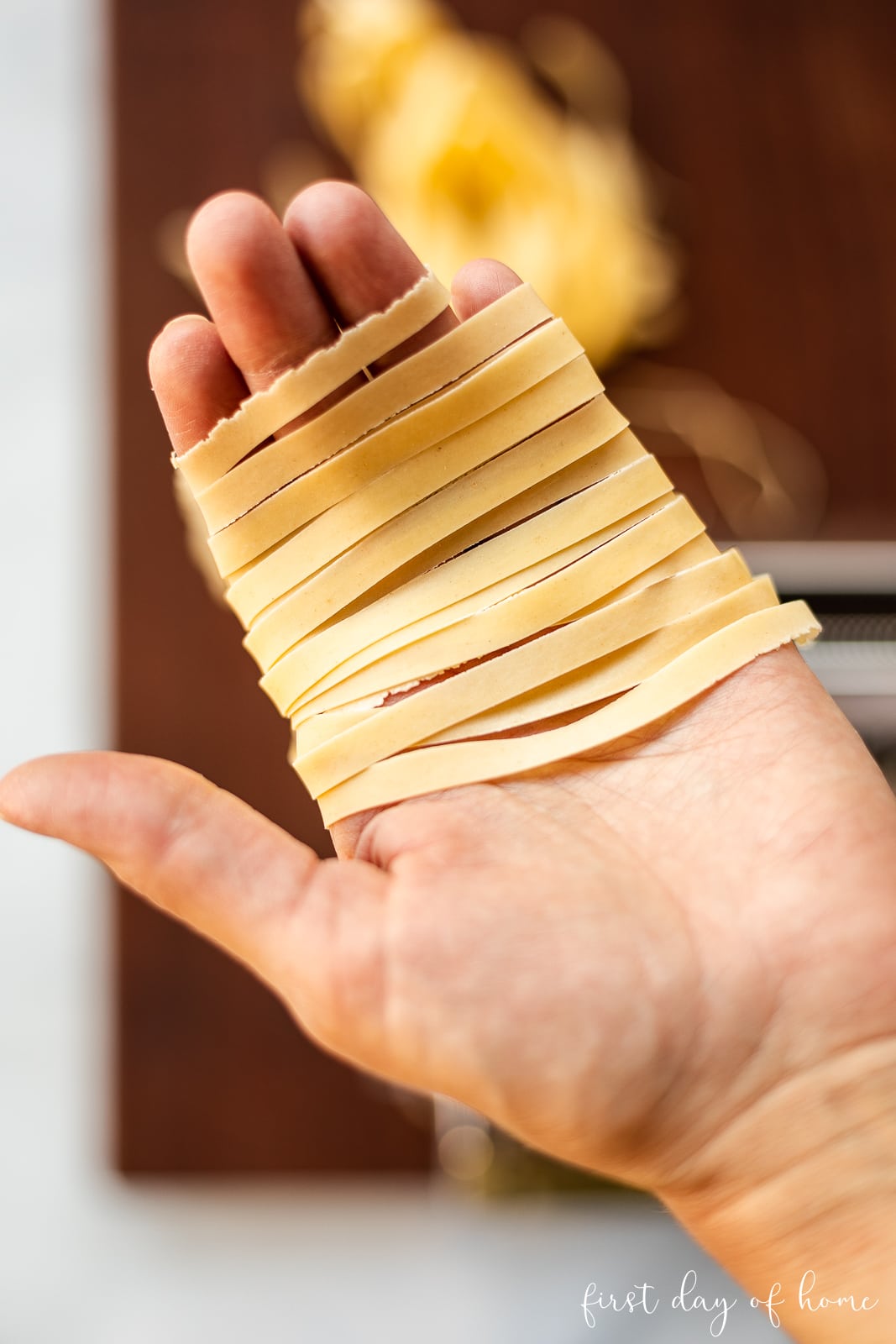
The noodles should rest another 15 minutes on a lightly floured surface, clean dishcloth, or pasta drying rack before cooking.
You can also form “nests” and store the noodles in a tightly fitting container until you’re ready to cook them. Just make sure to dust them lightly with flour to prevent sticking.
Cooking the Pasta
Fresh pasta doesn’t require as much time to cook as store-bought pasta, especially if it hasn’t dried out much.
To cook your pasta, bring 4 cups of water to a boil, adding salt to the pasta water. Then add the noodles and cook for 4-6 minutes.
Recipe Notes Summary
- Dough options: You can opt to use a stand mixer with a dough hook or food processor to mix your dough. However, I love the process of hand mixing the dough to really get the perfect texture and moistness.
- Fresh pasta dough storage: You can make this easy homemade pasta recipe ahead of time! Just store it in the refrigerator for up to two days before rolling out your noodles.
- Dried pasta storage: Once cut into shapes, you can store dried pasta for 2 days in the refrigerator. You can also store it in the freezer for up to 4 weeks.
More Traditional Recipes to Try
If you enjoy authentic cooking, try my popular Mexican pumpkin empanadas or this traditional Spanish rice recipe.
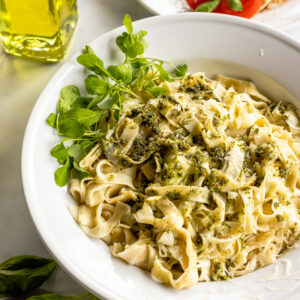
An Easy Homemade Pasta Recipe
Equipment
- Pasta maker machine optional
- Wood Pasta Drying Rack optional
Ingredients
- 1 ¾ cups 00 flour ( or Semolina flour)
- 2 eggs (lightly beaten)
- ¼ tsp sea salt
- water or olive oil (as needed)
Instructions
Dough
- Add a dash of salt to the flour, and create a "well" in the center to contain the eggs.
- Add two lightly beaten eggs to the well, and gradually work the flour into the eggs using a fork. Continue until a dough forms.
- Knead the dough by hand for 10-12 minutes until the texture is consistent throughout. Add a small amount of water or olive oil if the dough is too dry. Add flour if the dough is too sticky.
- Wrap the dough in plastic food wrap and let it rest at room temperature for 20 minutes.
Pasta Machine Method
- Cut the dough into quarters, and press one section at a time through a pasta machine.
- Begin on the highest (widest) setting, passing the pasta through twice. Continue stepping down to reach the desired thickness, passing the dough through twice on each level. As the pasta stretches, fold it in thirds or quarters lengthwise. Then, pass it through the width of the machine again.
- Cut the strips to the desired length, and let the pasta rest another 15 minutes before running each strip through the noodle attachment.
- Let the noodles rest on a lightly floured surface or drying rack for 15 minutes prior to cooking.
Alternative Method
- Alternatively, roll out the dough on a cutting board until it reaches the desired thickness.
- Cut the dough into strips of your desired noodle length.
- Roll each strip like a pinwheel or rollup and cut through the dough to form noodles of your desired width.
- Unroll the noodles and lay them on a lightly floured surface or noodle drying rack until ready to cook.
Cooking the Noodles
- Bring water to boil, adding a pinch of salt to the water.
- Boil on medium heat for 7-10 minutes, or until cooked to your desired texture.
- Drain the pasta and serve with the sauce of your choice.
Notes
Nutrition


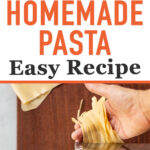


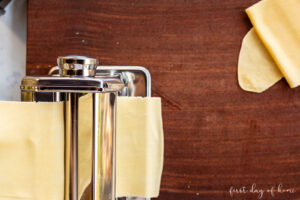
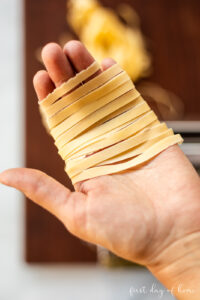
I just made this recipe this weekend and it worked perfectly! I did 2 batches. I did one by hand and the other in my stand mixer, will definitely stick with the mixer. It may look very dry but once you add water or oil it turns out perfect!
I also tried a second recipe and it didn’t work as well. Definitely keeping this one. And the best part everyone liked it even my grandkids.
My Cacio e pepper was just perfect.
Thanks for the nice comment! Cacio e pepe sounds like a wonderful way to use this pasta. I’m glad you shared your experience using a stand mixer too. We love making homemade pasta, and you’ve just inspired me to make it again soon!